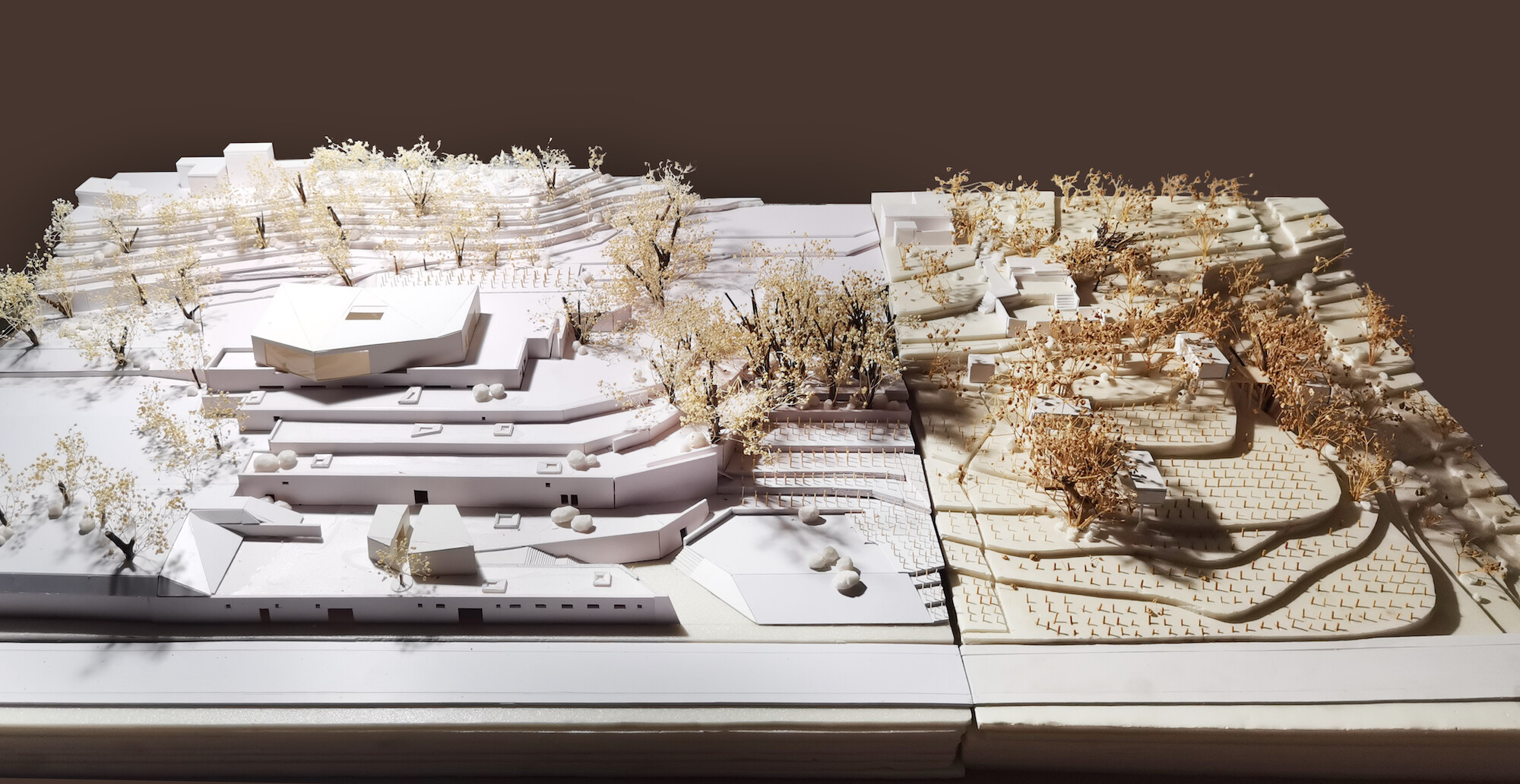Located in Quzika, Markam County, Tibet, the mission of the project is to generate income for local Tibetans by establishing a winery that can provide cutural tourism experience to alleviate poverty through the development of local industries.
The winery is located at the foot of the Dameiyong Snow Mountain, close to the Lancang River, the thousand-year-old salt fields and the only Catholic church in Tibet.
The natural environment of the site is perfect: the mountain terraces extending into the Lancang River are dotted with century-old walnut trees and century-old grape vines. In the site, the mountain streams flow by the remains of an ancient water mill.
Unusually, those circling all the way down the mountain path begin by looking down on the winery and sites at a continuously changing height and angle.
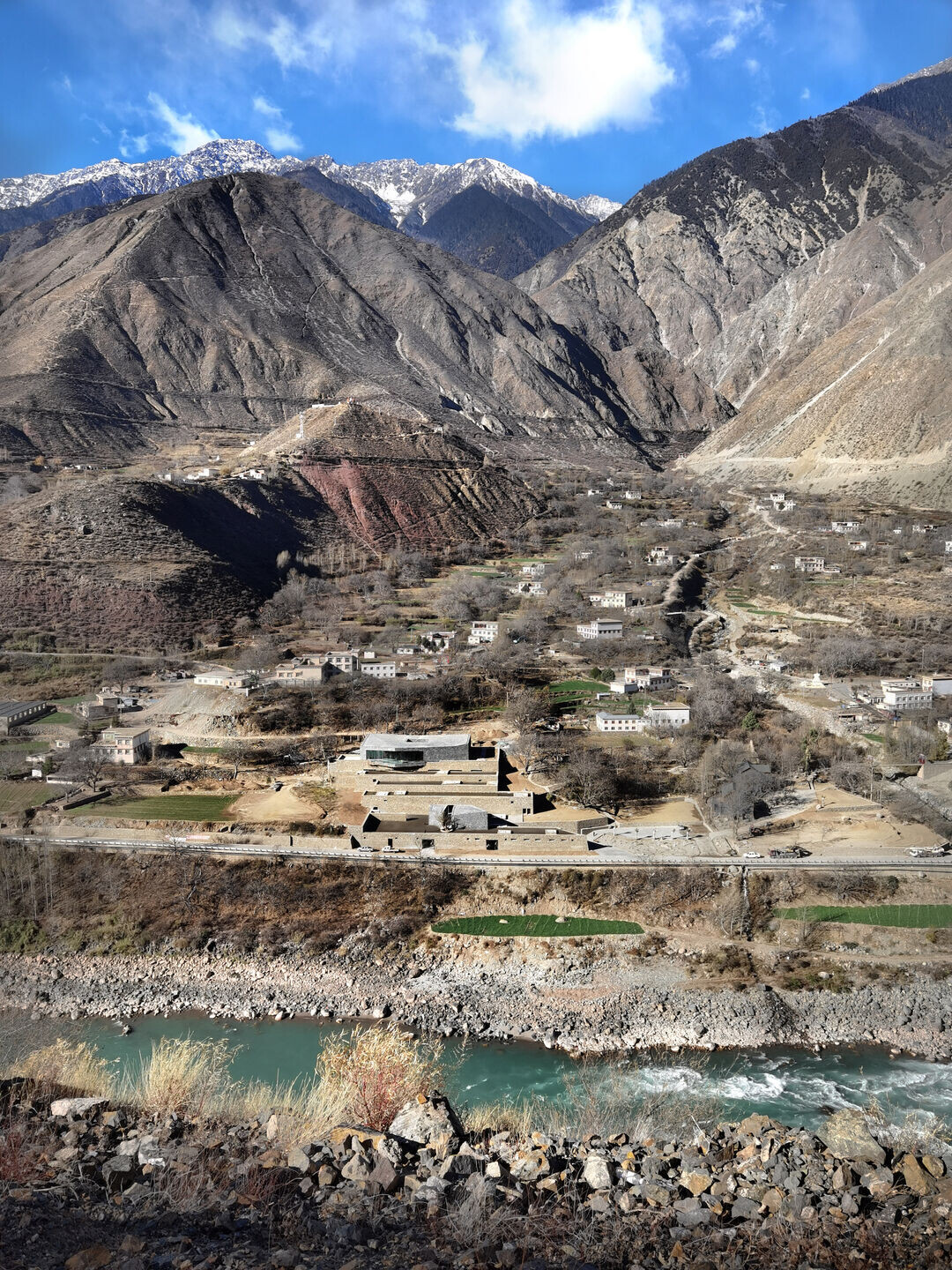

To construct a natural scene instead of a building
In Tibetan mountains, hide in nature and build with nature.
Learn from the Tibetans as well as Nature; express the respect and reverence for the mountains by hiding. Let nature itself be the designer, properly building a unique natural scene that is highly integrated with the site, a lively space and a character that can only grow here and now.
Hidden at the foot of the snow mountain, the gravity-flow winery,with a top-down, efficient and intensive process flow, takes advantage of the height difference of the site, achieving earthwork balance of the project. The mountain is transformed into the winery's process space, which is embedded in terraces to adapt to natural landforms, at the same time avoiding the old trees.
The roof of the process space is designed as a waterscape, forming a salt field. Streams of natural spring water from the snow-capped mountains are allowed to pass through the roofs and finally merge into the Lancang River at the bottom of the valley. Different amount of meltwater from the snow-capped mountains in different seasons form the high water period and the low water period,gifting the building with two kinds of scenery.
The public space of the winery consists of a museum, restaurant, book bar and reception center, made up of three “rocks” scattered on the “salt field”, are decorated by walnut trees and work together with the mountain rocks to reconstruct the natural scene.
The outer wall material is locally sourced from the existing stones on the site and becomes a continuation and extention of the original stone wall on the site. The outer stone wall significantly improves the thermal insulation performance of the brewing space and makes the wall construction economical and reasonable.
Finally, the overall design creates a poetic scene: the “salt field” extends downward into the Lancang River, and an old tree stands between the riverside rocks; as the Tibetans often herd cattle here, the winery becomes a daily activity space for the villagers. Just like before the artificial construction, this place will still naturally take place the real life of the local Tibetans.

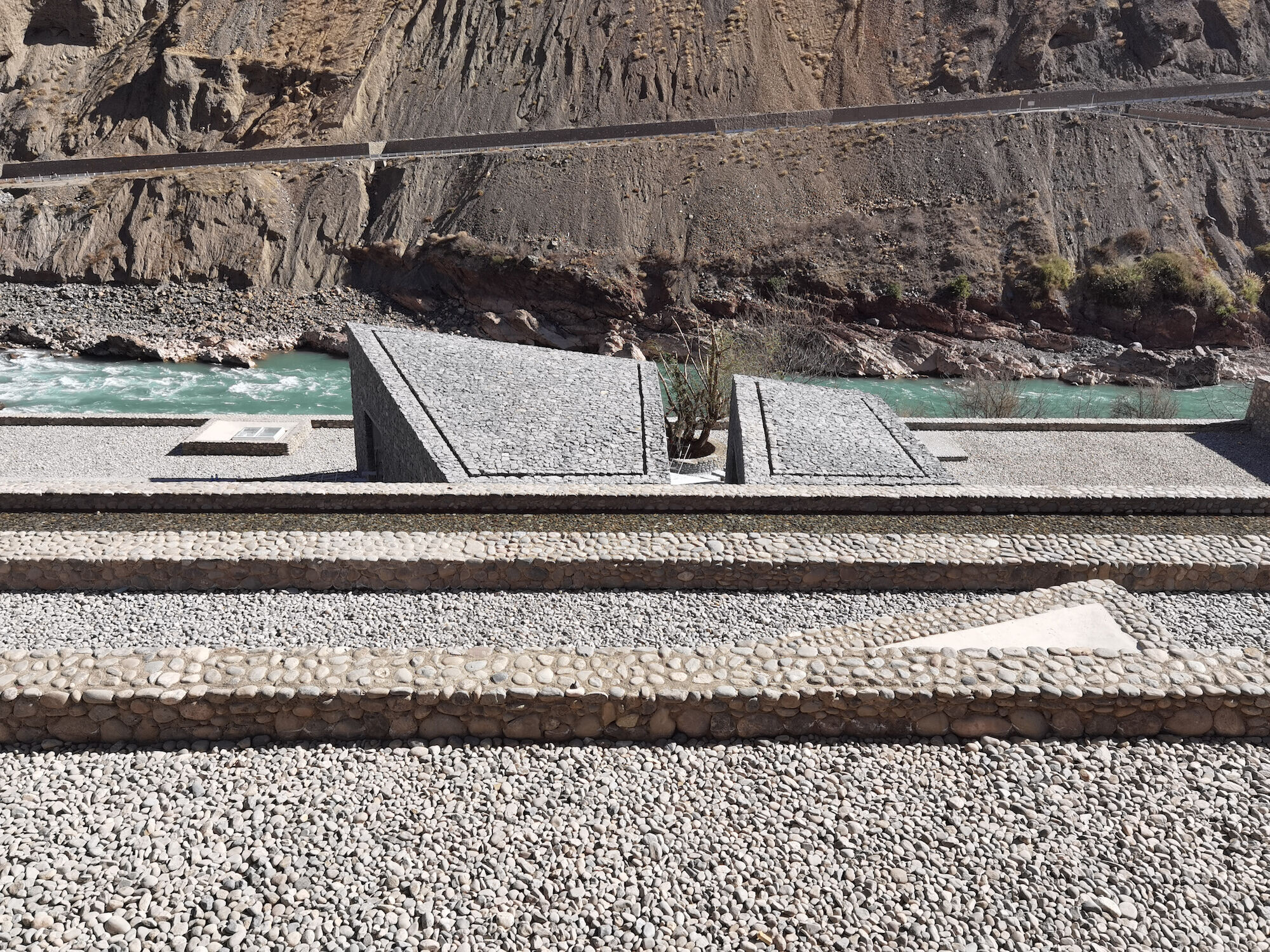
The Thousand-Year-Old Salt Fields, Offering a Way and a Place to Return
The rich layers and light and shadow of the Thousand-Year-Old Salt Fields provide the architect with a way of presenting space and inspiration:
The architectural space is embedded in the natural terrace along the river valley, presenting layers of roofs; under the effect of sunlight, as people’s viewing position on the mountain road continues to move, the water surface of the roof forms a scene of changing light and shadow and light and dark transformation. This is an irreplaceable visibility given to the building by natural elements.
With the mountain at its back and the river in the front,adapting to the terrain and extending downward, Quzica Winery becomes a link between the mountain and river.
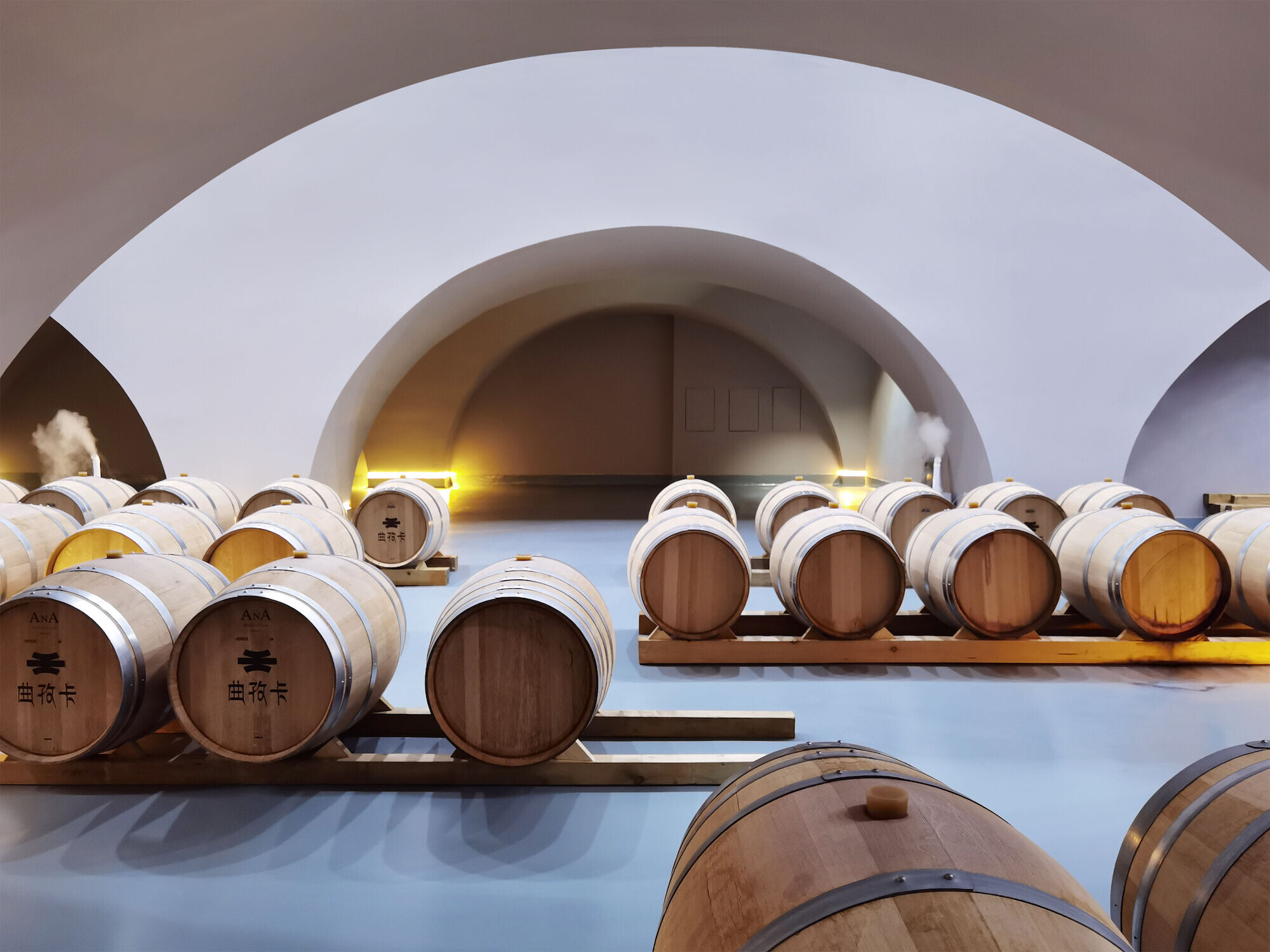

Natural Symbiosis
For a thousand years, the Tibetan people, who have always revered the mountains and rivers, have built the practical salt field of Quzika for the needs of life with their native wisdom; every part of it is pragmatic, but the result is another world that is beyond reality and full of fantasy.
A thousand years later, we should also be like the Tibetans when we build here artificially: simple, pragmatic, and revering the mountains and rivers; building a small world of natural symbiosis in a local way.
The architect entered Tibet 20 times in two years. At the beginning of the design process, the architect first went into the Tibetan area, joined the front line and paid attention to real life; he examined and compared the different landscape features, cultural phenomena, Tibetan people’s life and construction methods on the way to the project site along the Sichuan-Tibet route and the Yunnan-Tibet route.
During the design process, the architect was deeply influenced by the way people and nature get along in life.
In the end, the design concept and creation method of Quzika Winery became a summary and presentation of the concept of “natural symbiosis” by the architect through the daily intercourse and communication with local Tibetans.
Together with the Thousand-Year-Old Salt Fields, it has become a small part of nature along the Lancang River valley.
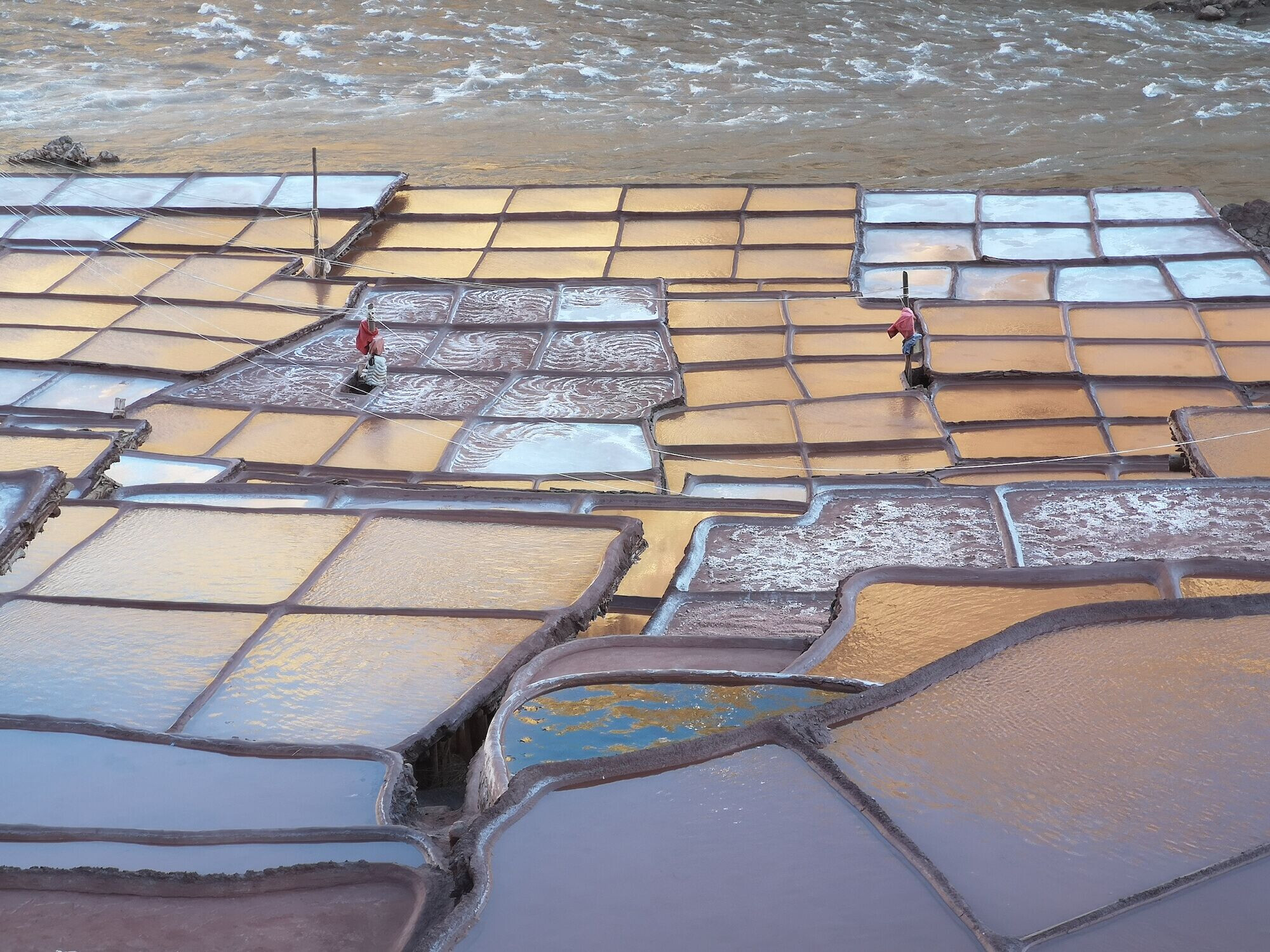

Break the boundary, Resolving the conflict, become a "Medium"
The architect breaks the boundary between the winery and the villagers’daily life, and in a respectful, open and tolerant way, appropriately build a natural scene that is highly integrated with the site, yet unique; at the same time, combine with the original landscape to provide a public space backed by the mountain and facing the river for daily activities for the local village residents; thus resolving the conflict between man-made structures and the natural environment, and between industrial land and civic land. The “winery” is transformed into a “medium”that reflects mutual equity.
Through the value of the project, the architect hopes to create new opportunities for the youth and elderly living on the land, thus alleviating the burden of local families in need.
Through the redefinition of design value, the winery is transformed into "winery" with a deep quotation mark, thus becoming a vaguely defined complex full of local humanism and social concern.

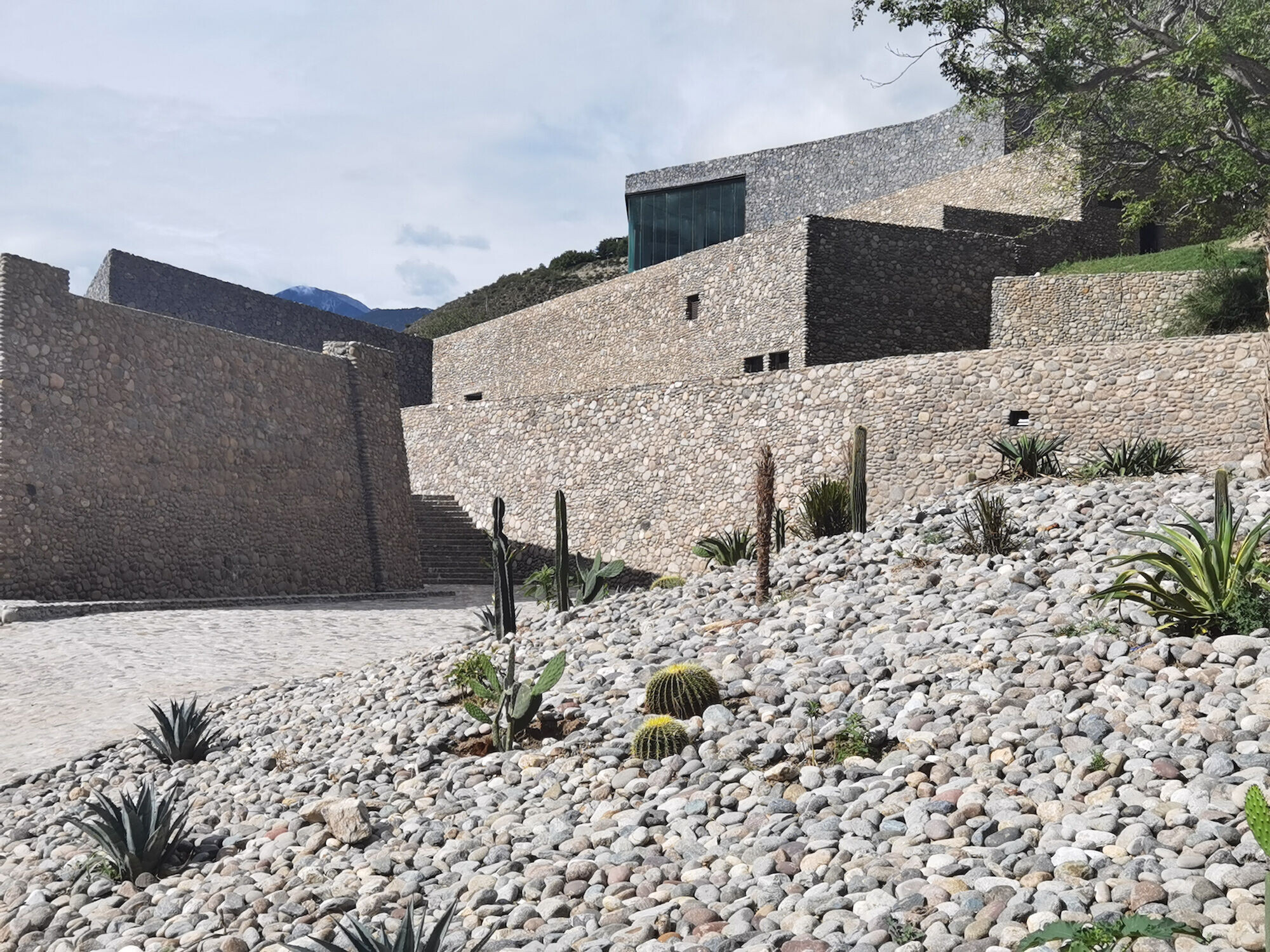
Team:
Architecture Firm: PL-T ARCHITECTURE STUDIO(Guangzhou pingshi architectural design Co., LTD)
Lead Architect: Wang Jianfeng
Chief architect : Wang Jianfeng
Architecture design team: PL-T ARCHITECTURE STUDIO(Guangzhou pingshi architectural design Co., LTD).
Landscape: PL-T ARCHITECTURE STUDIO(Guangzhou pingshi architectural design Co., LTD)
Senior interior designer:Zhang Pai
Interior design team: YINCHUAN DAMU DONGTIAN STUDIO
Clients: Qamdo YibaLiuwu Zangmi Industry Co. LTD.
Engineering: Sichuan ShengTai Architectural Reconnaissance &Design Co. Ltd.
Materials: Natural rock
Photo credits: Wang Jianfeng
